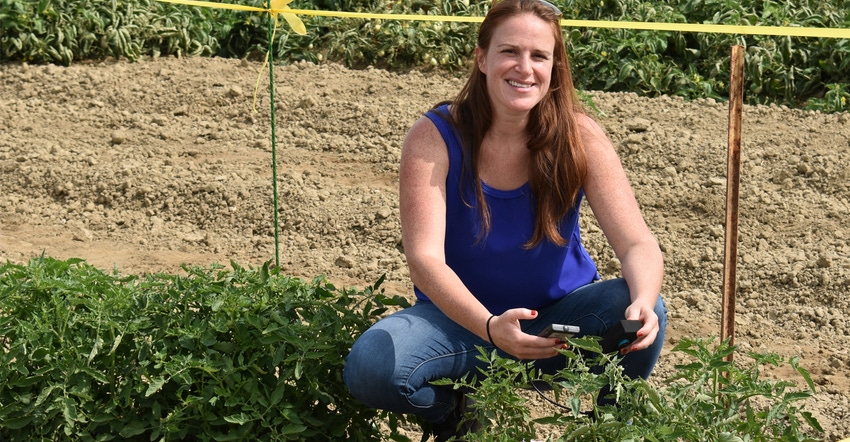November 11, 2021

Ag-focused startups have attracted a lot of money in the last few years, and these entrepreneurs are developing some innovative approaches. Yet many are learning that it's fine to develop an idea in the lab, but how will you sell it? Or perhaps more importantly, how do they want to do busines with those customers?
InnerPlant, creator of an innovative gene stack that causes a plant to fluoresce if under stress, wants to do more. The Davis, Calif.-based firm wants to be a trait provider, says Shely Aronov, founder and CEO. But how should it engage the market?
Related: New tech turns crops into field sensors
Aronov explains that in the very early days of the company, the approach to new developments "was unstructured," she says. "We decided earlier this year that we want to do [develop products] in a more structured way."
She points out that the current model of developing seed traits focuses on maximizing profit. "The result is soybean seed costs increasing by 305% over the past 25 years, when crop value only went up 30%," she says. "We're flipping that model on its head by putting farmers at the center of our seed research to develop a new trait that will increase yields while reducing the need for expensive chemicals."
Enter InnerCircle, a concept designed to connect the company more closely to customers. "In a sense, it's a group of farmers helping us define and design the future of this technology," she says, "and it's our way to put farmers in the center of everything we do — and get feedback continuously."
InnerCircle is open to farmers willing to pay to participate in the program. The cost was $500 per farm. The opportunity? To be on the ground floor helping develop a new technology, but also be part of the conversation helping choose the partners that get to join the smart seed ecosystem.
How was it received?
"We were hoping for 25 members, and we ended up with 56 to start — and it's still growing," she says.
Farm Progress reached out to a couple of those early members to learn more about why they got involved with this startup.
Farmers offer insight
Benjamin Riensche farms near Jesup, Iowa, and is always looking for opportunities. "I figure the bigger my posse is, the less I have to think," he says, a bit ironically. He notes he's always open to new technology, and the InnerCircle idea appealed to him.
Riensche has been involved with other startups, including IndigoAg; he has found those experiences rewarding to him not only as a way to learn more, but also to have some input into the direction these companies take. "It's challenging to be close to a tech company as they find their path forward," he says. "These companies are far from perfect, but the game is far from over."
He adds that plant germplasm today is in the hands of a smaller number of organizations than in the past. "I just decided there is not enough disruption in this spot in the market, and I like their idea of plants signaling stress," Riensche notes. "I like to be on this train, rather than wave at it as it leave the station."
Farming over in what he calls the “East Coast of Nebraska,” Quentin Connealy also joined the InnerCircle. He admits to being skeptical at first about the opportunity, but then he saw the focus on finding ways to tackle issues before an agronomist would even see them, and home in on those issues.
One benefit for InnerPlant could be insight that Connealy sees as needed: "On the ground, they have a lot to look for, and a lot to learn. They're taking the right steps and pumping the brakes a little bit on development. They want to build a solid foundation and tackle some market share."
Like Riensche, Connealy sees that a smaller number of companies control a larger share of the seed market. How the InnerPlant tech comes to market someday will matter. "It seems sometimes like the little guys get tech the big guys don't want," Connealy observes. He adds that this way, he feels he's getting ground-floor access and input to new tech.
Subscription model
That $500 investment offers a two-way benefit for the InnerCircle, Aronov explains. "It's a way for us to get them to commit their time," she says. "Some things are free for sure, but when they have to make that financial decision — and even though it's not a lot, it's something to make a formal commitment to us."
The benefit for farmers? Access. Learn more at innerplant.com.
About the Author(s)
You May Also Like






